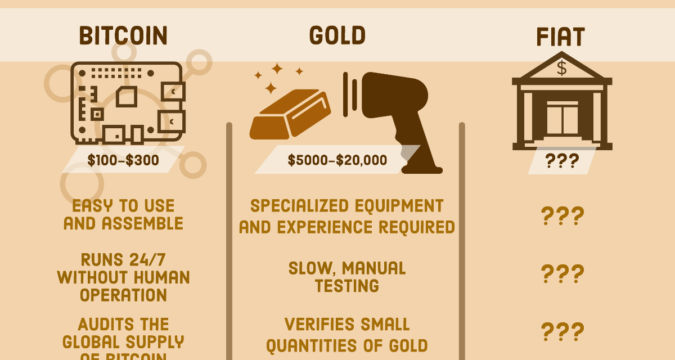
Day 6/21
There are three types of nodes that make up the bitcoin network:
- mining nodes
- full nodes
- light nodes
We just went over mining nodes (aka miners), which confirm pending transactions to the blockchain and mine new bitcoin. Full nodes and light nodes are what validate the new blocks and transactions submitted by the miners.
Bitcoin full nodes have three main jobs: to keep a copy of the entire Bitcoin blockchain, to validate transactions, and to enforce the rules of the network. Bitcoin light nodes do the same thing that full nodes do, but they don’t keep a copy of the entire blockchain history. We’ll mainly focus on full nodes.

The Purpose of Nodes in a Network
The more nodes that are distributed across a global network, the more decentralized a system is. Since the Bitcoin network has the most nodes (including miners) of any cryptocurrency, it’s the most secure blockchain. While many other cryptocurrencies are prone to hacks and blockchain attacks, Bitcoin is virtually immune — and I’ll explain exactly why tomorrow.
The role of a node is to communicate with the other nodes in the network directly, verifying that their history of transactions is aligned with the next node. As they verify new transactions, they check to see that the bitcoin being transacted has not been double-spent and that no bitcoin is being created out of thin air. If a node does see malicious transaction attempts, it along with the other nodes in the network will reject the transactions.
Bitcoin transactions are verified across nodes in a similar way that rumors are spread: Terrible and cruel, a rumor echoes through the network of gossip until everyone in the third grade knows about the crush you have on Joshua. But unlike rumors, full nodes only pass on transactions that they have verified themselves, according to the rules that they enforce and the blockchain history that they reference.
Since nodes run the Bitcoin core software that lists out all the rules of the network (such as the 21 million hard-cap), all full nodes help protect the network by only verifying proper transactions to a pending block, along with verifying completed blocks broadcasted by the miners. If by chance, a node accepts a malicious transaction onto a block, the other nodes in the network will reject the block altogether.

Running Your Own Full Node
Did you know that you can run your own node? It’s very easy with user-friendly, open source node installers like Umbrel! You can follow their guide for detailed instructions. It’s inexpensive, fairly straightforward, and helps contribute to the security of the Bitcoin network.
Although Bitcoin is fairly secure and many claim that running an extra node will not do much for enhancing the network, it helps to have an excess number of nodes worldwide in the case of rare Black Swan events, such as nodes under certain government jurisdictions being shut down all at once.
Running your own node also helps you eliminate the trust needed for other nodes to remain honest. Though most of them remain true, by running transactions through your own full node, you are essentially becoming your own bank. That’s a pretty cool feature that isn’t really possible with fiat, gold, or anything else that can be used as money.
Copyright © 2022 BTC Media and posted in it’s entirety so you may learn what BTC is all about.

